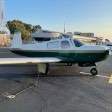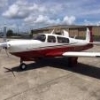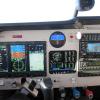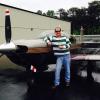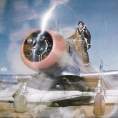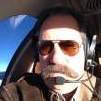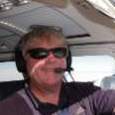Leaderboard
Popular Content
Showing content with the highest reputation on 09/22/2020 in all areas
-
3 points
-
When you get excessive mag drop, is the engine running smoothly or rough? Rough indicates a misfire likely a plug or harness issue. Smooth indicates a mag or timing issue. Did you clean and gap the plugs when you rotated them? Mag guys tell me that the engine actually prefers a gap on the wide side of the allowable range because it allows the voltage to build higher before the gap arcs resulting in a hotter spark and more efficient ignition. Also, as the points wear, the internal timing of the mag (E-gap) can change. The quick fix for this is to "bump" the mag buy rotating it slightly to bring the mag-engine timing back to spec. If successive bumping accumulates to more than 5 degrees (that's Slick's spec, not sure what Bendix recommends but probably similar) the internal timing needs to be reset. When the internal timing is off, it results in a weaker spark even though the mag-engine timing correct. As @DXB suggested, they're due for the 500 hour inspection anyway and as part of that, the shop will reset the E-gap. I use these guys: https://www.aircraftmagnetoservice.net/ Skip2 points
-
Yes, but only the early 231's had the wet fuel flow gauge like a bonanza, they changed them all out to flow transducers.2 points
-
The Ercoupe 415 C or D model would be far better than the others. More Mooney like than the others. Corrosion is the big concern on all of these older planes. The carry through area on Ercoupes needs a thorough inspection for corrosion between some dissimilar metals employed there. I've only seen a couple with actual problems, stemming from lots of sitting, with leaky canopies. Look for one with an O-200 engine installed under a Field Approval, or the newer STC. Far better than the C85 they came with. https://www.ercoupe.org/index.php https://www.faa.gov/aircraft/gen_av/light_sport/media/ExistingModels.pdf 415 C and D are on the list2 points
-
Ill vouch for Parker as well. Super nice dude and is very easy to deal with. I used Dorr Aviation for the loan, they were super easy to deal with and helped me understand quite a bit that I wasnt 100% aware of as it was my first airplane.2 points
-
These are worth 300 each on trade against new , whenever they have trade up programs2 points
-
I would expect it to work - the Floscan transducer is an open collector transistor output and the Shadin has the pull up resistor to Vcc. The JPI. Just piggy backs on the signal pulses. But, I’d double check with JPI. I’ve found JPI’s tech support to be very knowledgeable and helpful. I suspect the live APS courses are a thing of the past. Walter and John had a falling out with George which has since been settled with George being the sole owner of all the intellectual property as I understand it. Walter passed away recently. I haven’t communicated with John in a while, so I don’t know what’s up with him but he freely shared a lot of advice about round engines and warbirds for my volunteer work at the museum. Great guy. I took the APS course in Ada back in 2007 and thoroughly enjoyed it. I flew there in a friend’s Arrow with dual VORs, no GPS, and an inop DME. Most of the attendees were Cirrus owners and they couldn’t believe I could possibly fly to Oklahoma from California without dual GPS, an engine monitor, an autopilot and XM weather. Half the fun of the seminar was the war stories shared byJohn, George and Walter. Skip2 points
-
But the thing is its still perfectly legal to fly the ILS to mins when the tower is closed. You just can't use the ILS as a basis for filing that airport as an alternate. -Robert2 points
-
<Raising my hand> Yep, that's what I am ending up doing. Put in the 830 as an easy/inexpensive upgrade to the existing JPI and now have a 900 from @jeev waiting to go in to replace the existing 830 and original gauges. I just love spending twice the labor, twice the cost, twice the time........2 points
-
Everyone in this thread who tells you they can consistently change their oil without spilling a drop is a liar. We've been doing our own oil changes 2-3x year for the last 14 years. I have all the contraptions for dealing with the filter: the v-shaped piece of angle iron, the diagonally cut oil bottle, the rags, the bags, all of it. I've tried all the gimmicks, too: waiting two days after draining the oil to pull the filter, punching a hole in the filter, etc. And with dozens of oil change iterations under my belt I've finally reached the point where I only make a gargantuan mess pulling the filter every 2nd or 3rd time. It's just the way it is. Expect and plan for a mess. You won't feel disappointed or rushed when it happens, and you'll feel great on those occasions when it doesn't.2 points
-
I tried to read up on this when a friend of mine acquired an airplane with an IFR GPS which was not connected to the OBS at all. I'm still confused but it seems that, from the FAA's perspective, so long as a CDI is available within certain visual angles, it can be the one in the unit. OTOH, you will find the AFMS limitations for some units specifically require an external CDI. So I think the answer is, "it depends."2 points
-
2 points
-
1 point
-
1 point
-
However you can sign up for USAF's biweekly plan, to pay a little less interest.1 point
-
I can't preclude a harness issue, but if you're past 500 hours, pulling both mags for routine IRAN right now seems like a no brainer. This is one place that has a good reputation: http://crossfiremagneto.com/Crossfire_Magneto_Service/Welcome.html You could also consider overhaul exhange to save time and/or replace the left with a Surefly.1 point
-
1 point
-
I know nothing about what Rocket Engineering did to test and certify their configuration. But I know that even though we generally prefer to keep CHTs below 400 for cylinder longevity, the actual Continental redline is much higher than that, I think 450. If your engine is running how you like it in all other respects, I would suggest this is probably normal for your setup. You already know what you need to do to get lower temps. As you say, you were at a lower altitude than the book spec, and what about outside temperature? Was it standard, high, low? That would have an impact as well. And of course, your actual fuel flow may be different than what the meter is showing, so unless you know it's calibrated perfectly that would be a factor. It's probably been quite some time since that airplane rolled off the "factory" floor (I admit, I don't know the process for how those Rocket planes are first configured) so time has assuredly moved your plane away from true book specifications, as it has with all our planes.1 point
-
I financed through Alex Savoie twice as well. She was straight forward. US Aircraft does have a prepayment penalty FYI. Paying a penny more on the monthly triggers it. Seriously. I was warned to only pay the exact coupon payment or else. rates are in the low 4% right now. I inquired about refinancing mine a week ago.1 point
-
https://ezpourspout.com/ Here is the where you get order the EZ-Pour from the mfg if you promised not to use it for gasoline or 100LL . With 5 gallon gas can on sale for $14 at Target, It is a very cost effective set up. Each kit has enough part to fit most gas cans on the market. The most difficult part of the "conversion" is probably drilling the 1/2" hole for the breather plug. Some of the plastic shaving will fall inside the gas can. Needless to say, you WILL need to get all the shaving out before first use. If you can't buy "Seal All" from your local store, you should order that as well. Without it, the breather plug will sometime leak a little. My preferred set up is one spout with a bunch replacement cap (or replacement cap). After all, I don't need one spout for each gas can. In fact, replacement caps make it easier to transport the gas can without a long spout. Be sure not get the hi-flo version. The spout opening is way to big for your finger to plug when I'm fueling. The regular version flows fast enough - 5 gallon under 2 minutes.1 point
-
I have installed a GNC-355 and GNC-255 that I am able to toggle between the two on my G5'S. Both GNC units have lateral CDI on the navigator itself. Having two deadicated CDI's probably saves you money wise but not panel space wise. If you were to go with a single CDI driven by two separate navigation sources. Especially if one of the nav units is not Garmin,it gets expensive. you get to buy a real expensive set of relays, annunciator, switch setup $1200 + I think. With the two G5's and GAD29B and two Garmin nav source units driving The CDI, takes the need for switch relay annunciator unit. I think have ran out of room behind the panel.my creativity in finding space behind the panel to mount all these extra boxes may have ran out. James '67C1 point
-
I am so grateful for all of the suggestions and advice because I just had the best experience in my Mooney in an epic cross country that was so enjoyable due to the PC system being fully operational. Phase one, to get the PC system operational complete! Here is where I am at at this phase. While the airplane was in annual I was unable to locate all the components I needed to restore the 1966 installation, but I was able to find an TC-100 from Wentworth Aviation here in Minneapolis. This is not the TC-100 EVT, just a TC-100 without any output to a nav head. I installed it in the only open hole in the instrument panel on the co-pilot side and it worked great! I took it up for a test flight and let go of the controls and the airplane leveled the wings and flew strait. This was just in time because I had planned a week off for an airplane trip after the annual was completed to see how well it worked on a long cross country. Well I gave it a real cross country, lol. I flew from Minnesota to Colorado Springs to spend a night visiting my son who is on a C-130 crew and was in Colorado Springs for a mission. From there we crossed the Rocky Mountains to Northern California to visit my sister in law north of Sacramento. The PC was so helpful as I flew through the smoke from the forest fires when even though I was VFR, the sky was extremely obscured with only the ground immediately below the aircraft as the only attitude reference and the PC made it relaxing instead of nerve racking. Next we flew up the Pacific Coast highway to Seattle to visit my other son. After that, we crossed the mountains again heading East to Glacier National Park, and home to Minnesota all in 7 days. What a great trip and the wing leveler was very helpful. I had to frequently (every ten minutes or so) very slightly trim the aircraft to account for the asymmetric fuel burn but the the ability to completely let the airplane fly itself was amazing because it allowed me to just watch the scenery of mountains both ways and greatly reduces pilot workload. I also had the opportunity to verify that the service ceiling is 17,200 feet just like the book says! Now during the next phase, I will get the nav head working so the airplane will hold a magnetic course without requiring the small frequent trim adjustments.1 point
-
If it has a fuel flow gauge it's the same thing, it uses the fuel pressure out of the flow divider to drive the gauge.1 point
-
1 point
-
I think it was Richard Collins that said something like “the only hour that matters is the next hour”.1 point
-
I loaded a new default theme for the site and this seemed to fix it - at least on the couple devices I tested.1 point
-
Have worn the same Rolex Datejust since 1987 when I got it as a graduation gift. I have never seen the need for anything else. As an added benefit, it can be sold today for more than it was purchased then, even factoring in inflation.1 point
-
1 point
-
I am a firm believer in the "all in" approach. Some people will say, "Major in business or something other than flying so you have an "out". If your goal is to be a doctor, do you major in architecture in case you can't cut med school? I went "all in" majored in Aeronautical Engineering, got my ratings at a 141 school, flew trash, flew anything that would fly, and I was rewarded with 47 wonderful years. 4 years flying part time in college, couple years Part 135, 4 years corporate, the rest major airline. Some years were tough, some were on furlough, some paid little, but in the end it was all worth it. I would do it all over again! I applied to 5 airlines, got job offers from 4 and the one I retired from is the one who turned me down. The first airline I applied to wanted minimum 1000 hours, 4 engine, jet PIC time. I never even flew a jet when they hired me yet I passed their interview simulator ride. Do not let nay sayers and the "yowbuts" stop you. Go all in, deep end of the pool or don't go at all. Be like Cortez, burn the ships, then you have to fight or die. For my money, UND has a great program. I have no affiliation with them.1 point
-
I have never used any of the shops here except Cole. But one of the things I most definitely like about the shop is that Joe turns a wrench with Jeff and Will , and it has been those guys for as long as I’ve been going there, which is seven years. Joe is a pilot himself, and in fact is an ATP and was formerly an instructor. I think that adds a nice dimension to it. No turnover, although they did lose excellent IA to retirement a couple years back They all know what they’re doing and I trust everyone in the shop because I know them so well and have a lot of confidence in everybody that touches the plane. Can’t say that for a lot of shops these days. As the saying goes, any shop is only as strong as its weakest link. I believe that is very true.1 point
-
I had Lycoming build my engine. I can fly around with 8 quarts just fine. Doesn't blow off. 100 hours TT on the engine now. -Robert1 point
-
No Tinnermans. I ordered #4, #6 and #8 Tinnermans separately. #4 used for some interior screws. The exterior screws at #6 and #8. But, I rarely have to replace a Tinnerman. Skip1 point
-
^^This. It's the line to a wet fuel pressure gauge. Get yerself an engine monitor and ditch that dude.1 point
-
My thoughts are you’re poorly informed. JPI 900 allows pre alarms to be configured by the user, my CHT warning is set to 400. I assume 930 has similar functionality.1 point
-
I don't have much experience with the antique LSAs, but it might be worth looking at the Part 103 ultralights. Some of those aircraft are impressively equipped (including with a BRS, if that's your thing), and can be had for $30k ish brand new. ETA: The Part 103s probably don't accomplish your sport pilot training requirement, so I'll withdraw my suggestion but leave it here for posterity1 point
-
Congratulations! You may try contacting @mike_elliott here on MS. He is out of the Tampa area and can help with both tasks.1 point
-
1 point
-
1 point
-
Definitely! Looking at building a 60 x 50 hangar. The lots I’m looking at are just above the private boat docks so it’s a short walk to the water. I wanted to leave enough room though for a Mooney Mite! Always wanted one.1 point
-
Hey Karen, welcome aboard... Personal finance has a lot of expertise to go with that... I used AOPA/Bank America when I had the same challenge, years ago... Mostly, I wanted the experience of AOPA behind me... after a couple of years of ownership we refinanced looking for the lowest rate... I had gone to my bank... they were so happy to discuss private airplane financing... for my new Lear or Gulfstream... they surprised themselves with how little they knew about GA airplanes... For insurance... many MSers use @Parker_Woodruffand company... Start organizing your Transition Training while you are in the planning phase... Good luck with your next steps... Best regards, -a-1 point
-
Here's why the 900 is actually cheaper... You can install the 830 now and then pay to remove it and install the 900 later. Or you can just skip the 830 and install the 900 now. Regardless, you're gonna install the 900. Probably when you get tired of spending to keep the old original factory gauges functioning.1 point
-
You can use the 355 to do this without OBS mode connected to the CDI. In this case, you would do “direct XYZ”. Then, direct again and an OBS button will appear where you can select radial 340.1 point
-
1 point
-
Glad to see this thread resurrected. Ended up picking up a 1980 M20J and love it! Useful load is on the lower end. But took the copilot seat out and it’s become our preferred means of traveling for a small family of 3, bags and all! Thanks for all the help here!1 point
-
Reminds me of the 65 Mustang I had in college. I decided to replace the automatic transmission fluid. I had removed a bad speedometer cable and had not installed the new one yet, so the drive end at the transmission was out leaving a hole in the case. I didn't understand that you had to drain the torque convertor separately -- I thought it would all come out if I pulled the pan. I started adding the specified amount of new fluid and after a few quarts, I noticed red fluid seeping out from under the car where it was flowing out the speedometer drive hole. If you think oil is a mess to clean up, try a gallon of Type-F transmission fluid. It's really slippery on a cement garage floor. If we are honest, I'll bet all of us have made a mess at one time or another. Skip1 point
-
A couple more quick answers, a 3 blade prop has a little better power loading and efficiency (~77.5% instead of 76% as above, for example) at the low speeds, so under the same 88 KIAS climb above you are seeing about 139 hp out of the prop instead of 137 from the BA. Will post the Benchmark model for a Mooney-Hartzell three blade here later today. You are correct on that long floatplane prop. Once out of the water a better noise and efficiency technique would be to get the RPM back off 2800 as one accelerates. If I had a float plane I would go to the trouble to model a climb RPM profile that would keep those tips off transonic as the helical tip speed (rotational speed plus forward speed basically) increases. Benchmark does show the 2 blade BA about 1% more efficient than the 3-blade at a normal cruise, for us around 155 KTAS at 8000 feet and roughly 70% power. Tim you are also correct on that. I can post more model charts if anyone wants to see 'em. And Cliffy thanks for the kind words. Engineering stuff is interesting, and what I try to do is keep it reasonably accurate, brief enough not to be boring, and immediately applicable by the audience in their flying.1 point
-
Oh BTW, did you do the oil screen on the back of the engine ? Its a lot of fun with safety wire too.1 point
-
1 point
-
Check the voltage drop while you are trying to start the engine from the negative battery post to the airplane skin (not the shelf). If you see more than ~1/2 volt you need to fix the bonding between the shelf and the airframe.1 point
-
I use Wash Wax All. It’s easily available at Aircraft Spruce. They also have a degreaser product that is great as a belly wash. I wouldn’t use anything else on my plane. I’m based at Van Nuys anytime someone wants to meet up.1 point




.thumb.jpeg.072e4aff735a990f7784f8d33e7de9ca.jpeg)
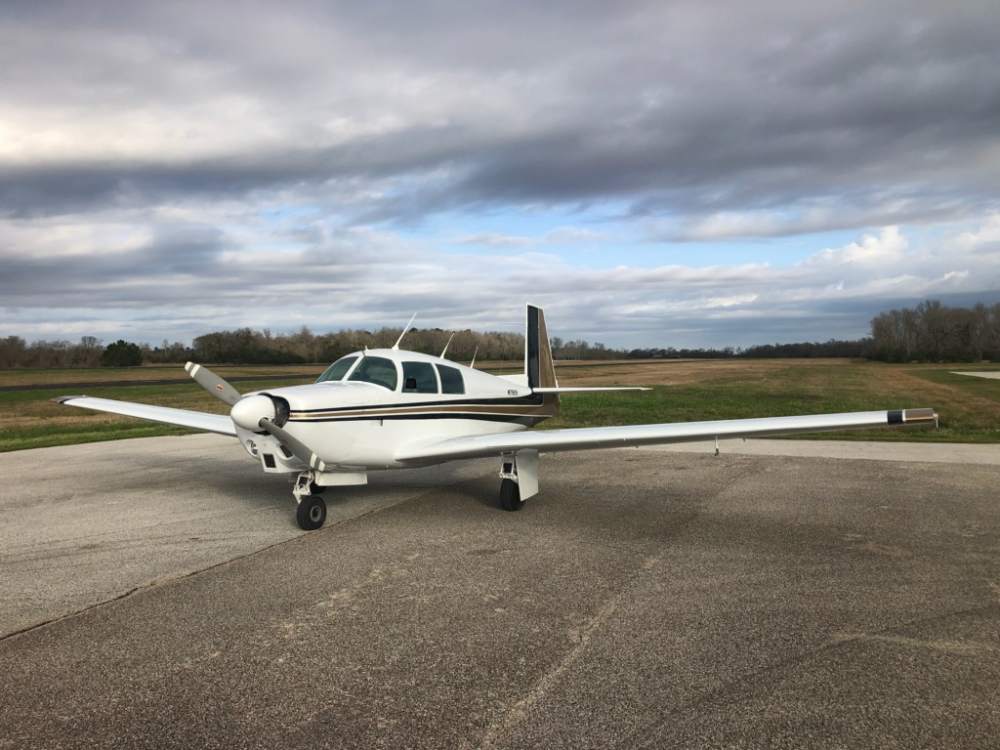

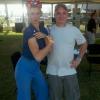
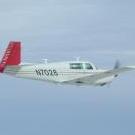
.thumb.jpeg.2776650e1f69dbbfd89c7b9ae718a51d.jpeg)
.thumb.jpeg.c2e8038a92976b4dd1c90845014f7661.jpeg)

